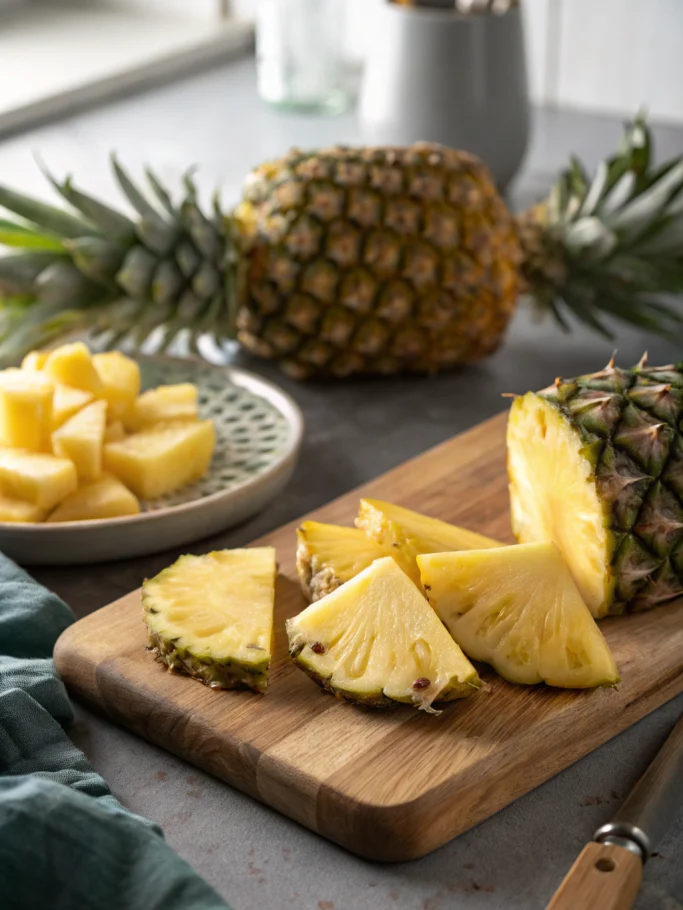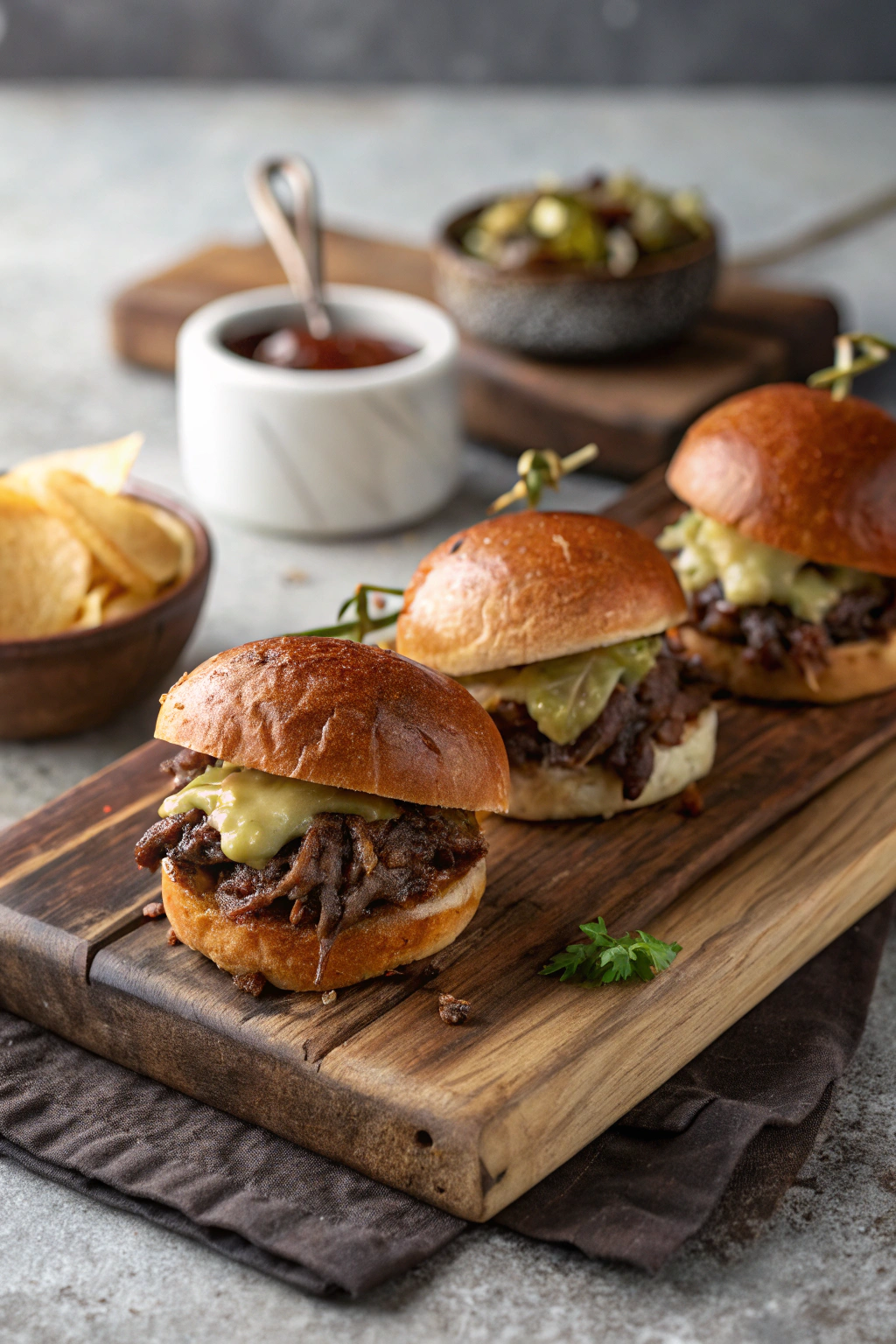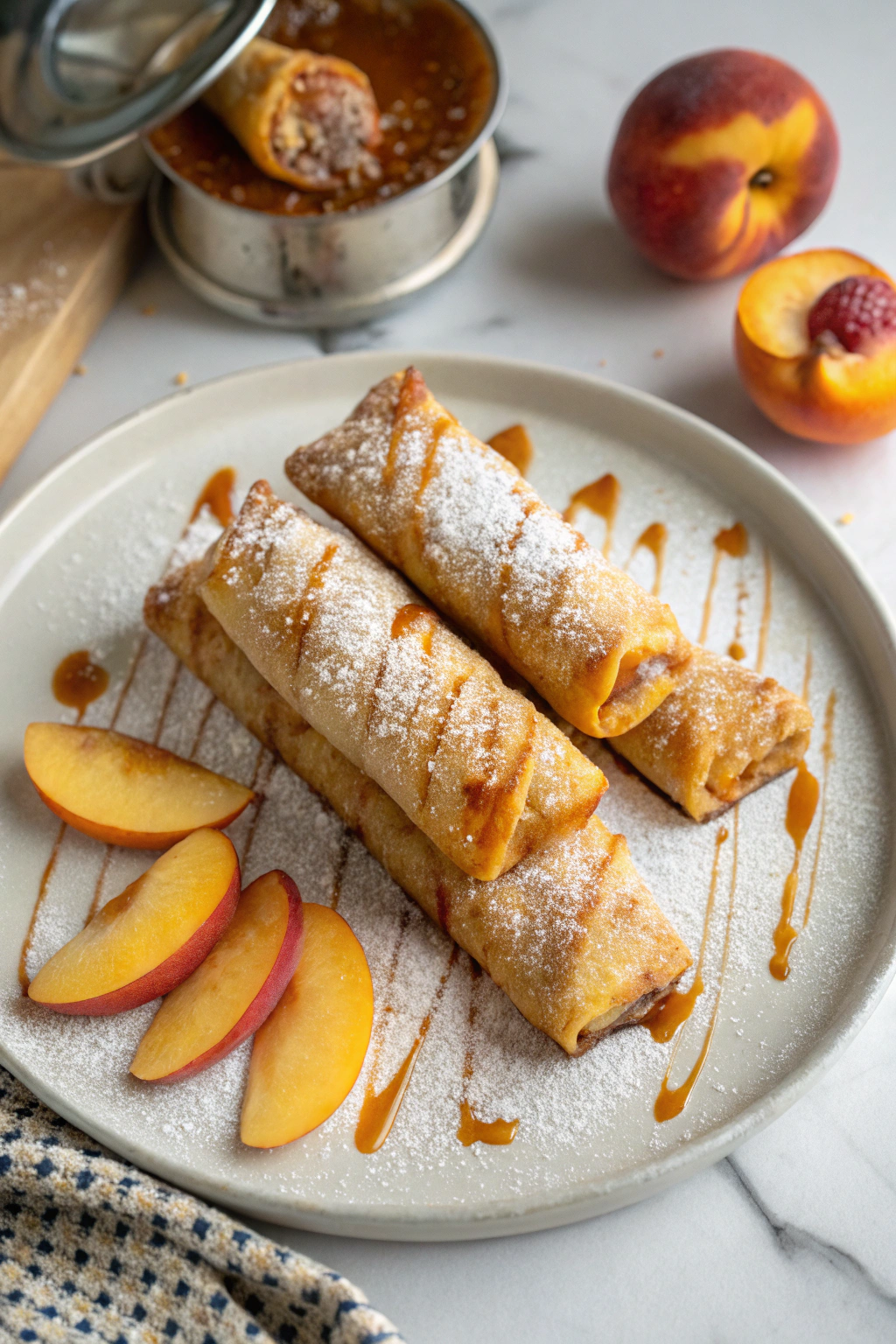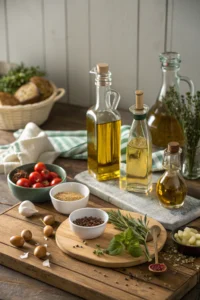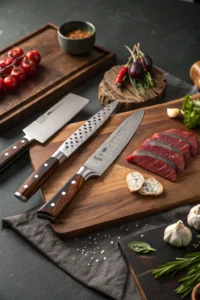Hey there! I’m so excited to share my tried-and-true method for cutting pineapple that I’ve perfected over years of trial and error (and yes, a few sticky kitchen counters along the way). Learning to cut pineapple properly changed my whole tropical fruit game. Last weekend, I was prepping fruit for my daughter’s luau party, and the guests couldn’t believe how neat and uniform my pineapple chunks were. Trust me, once you master these techniques for cutting fresh pineapple, you’ll never go back to the canned stuff. Whether you’re making a fruit salad, grilling some spears, or just want perfect pineapple rings for your morning smoothie, I’ve got you covered with all the tips and tricks you need.
Essential Tools for Cutting Fresh Pineapple
The Best Knife for Pineapple Prep
Y’all, let me tell you – the knife you choose makes all the difference when cutting pineapple! After destroying two cheap knives (and nearly my fingers), I learned that a sharp, heavy-duty chef’s knife is absolutely essential. I use my 8-inch Wüsthof, but any quality chef’s knife will do the job. The blade should be at least 8 inches long to handle those big cuts through the pineapple core. A serrated knife might seem tempting, but trust me – it’ll just tear up the flesh and make your cuts super messy. Keep that knife sharp, too! A dull blade is actually more dangerous because it’s more likely to slip while you’re cutting pineapple.
Optional Gadgets and Cutting Tools
While you can totally master cutting pineapple with just a good knife, there are some fun gadgets that can make the job easier. My mother-in-law swears by her pineapple corer, which removes the core and creates perfect rings in one twist. I’ve also tried those pineapple slicers that look like giant corkscrews – they’re pretty neat but can waste some of the fruit. The V-shaped pineapple eye remover is actually super handy if you cut pineapple often. But here’s my honest take: these tools are nice to have but not necessary. If you’re just getting started with cutting pineapple, stick with the basics before investing in specialty tools.
Prep Surface and Safety Equipment
When I’m ready to cut pineapple, I always start with a large, sturdy cutting board – and here’s why: those juices will go everywhere! I learned this the hard way after ruining a wooden board with pineapple acid. Now I use a dishwasher-safe plastic cutting board with a groove around the edge to catch all those sweet drips. Some folks like wearing cut-resistant gloves while cutting pineapple, which isn’t a bad idea if you’re new to this. Just make sure your workspace is clean and dry – a slippery cutting board is nobody’s friend. And keep a kitchen towel handy; you’ll want to wipe down that sticky knife handle between cuts
How to Pick the Perfect Pineapple for Cutting
Ripeness Signs to Look For
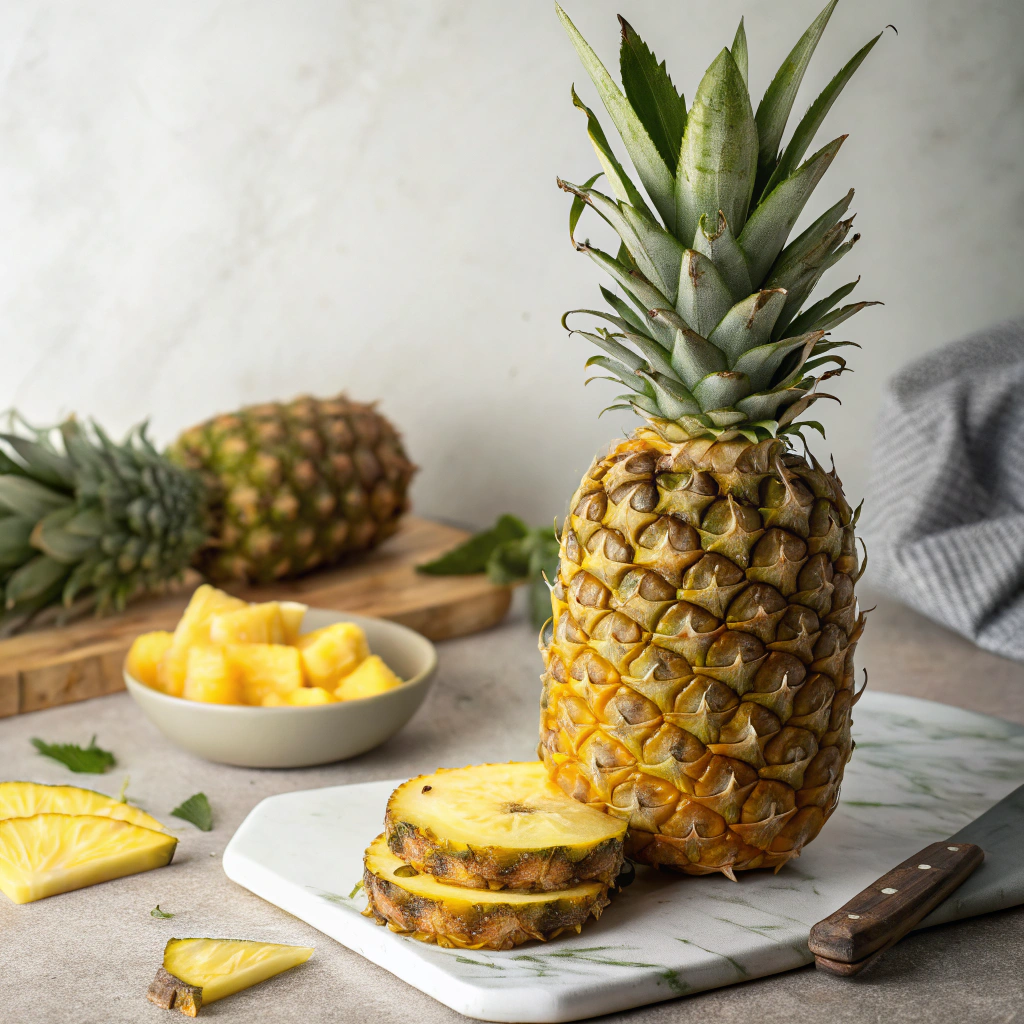
When selecting a pineapple to cut, color isn’t always the best indicator of ripeness. Instead, give it a gentle squeeze – it should yield slightly but not be mushy. A ripe pineapple will feel heavy for its size and have a sweet, fragrant aroma at the base. The leaves should be fresh and green, not brown or dried out.
Try pulling a leaf from the crown – if it comes out easily, that’s a good sign of ripeness. I learned the hard way that a completely yellow pineapple might actually be overripe, so look for one that’s a mix of green and golden tones. If you’re planning to cut pineapple for a party, pick one with a slight give that smells sweet at the bottom.
Common Pineapple Varieties
The most common variety you’ll find for cutting is the Smooth Cayenne pineapple, which has that classic golden flesh we all know and love. Del Monte Gold pineapples are another popular choice – they’re extra sweet and have a lovely golden interior perfect for fresh fruit platters. My personal favorite is the Sugar Loaf variety, which has white flesh and is incredibly juicy when cut. The Hawaiian Gold, or Maui Gold, is smaller but packs more sweetness with less acidity. For those lucky enough to find them, the Queen Victoria pineapple is smaller and has a more intense flavor that’s amazing in fruit salads.
Storage Tips Before Cutting Fresh Pineapple
To store your whole pineapple before cutting, keep it at room temperature if you plan to eat it within two days. The ripening process will continue, making the fruit sweeter and juicier when you’re ready to cut it. If you need more time, pop it in the fridge where it’ll last about five days. Avoid storing pineapples in plastic bags – they need air circulation to prevent molding. I like to place mine upside down on a plate for a day before cutting to help the sugars distribute more evenly throughout the fruit. Remember that once cut, pineapple doesn’t continue to ripen, so timing is everything.
Step-by-Step Guide to Cut Pineapple
Removing the Crown and Base
Before you cut pineapple, gather your supplies: a sharp chef’s knife, cutting board, and a clean kitchen towel to catch any juice. Start by laying the pineapple on its side and slicing off the leafy crown about half an inch below where it meets the fruit. Next, flip it over and cut off the base, creating a stable surface. A properly cut pineapple needs a solid foundation, so make sure these cuts are straight and even. I always save the crown to use as a garnish for tropical drinks or fruit platters – it adds such a fun touch! Stand your trimmed pineapple upright on the cutting board.
Slicing Off the Outer Skin
To effectively cut pineapple skin, stand the fruit upright on your cutting board after removing the top and bottom. Working from top to bottom, slice downward to remove the outer skin in strips, following the curve of the fruit. Don’t cut too deeply – you want to preserve as much flesh as possible while removing all the tough skin. I find it helpful to hold the pineapple with a clean kitchen towel for better grip. Make sure your knife is sharp to get clean cuts. Some people prefer to cut pineapple in a spiral motion, but I find straight downward cuts more manageable.
Dealing with Those Pesky "Eyes"
After removing the skin, you’ll notice diagonal rows of brown spots called “eyes” remaining on your cut pineapple. These tough bits need to go! Use the tip of your knife to cut shallow V-shaped grooves following the spiral pattern of the eyes. Don’t worry if your first attempt isn’t perfect – practice makes perfect when learning to cut pineapple efficiently. I’ve found that cutting slightly deeper around the eyes saves time compared to trying to remove each one individually. Some folks use a special pineapple corer, but I prefer the traditional knife method for more control over the cut pineapple portions.
Creative Ways to Cut Pineapple
Classic Rings and Chunks
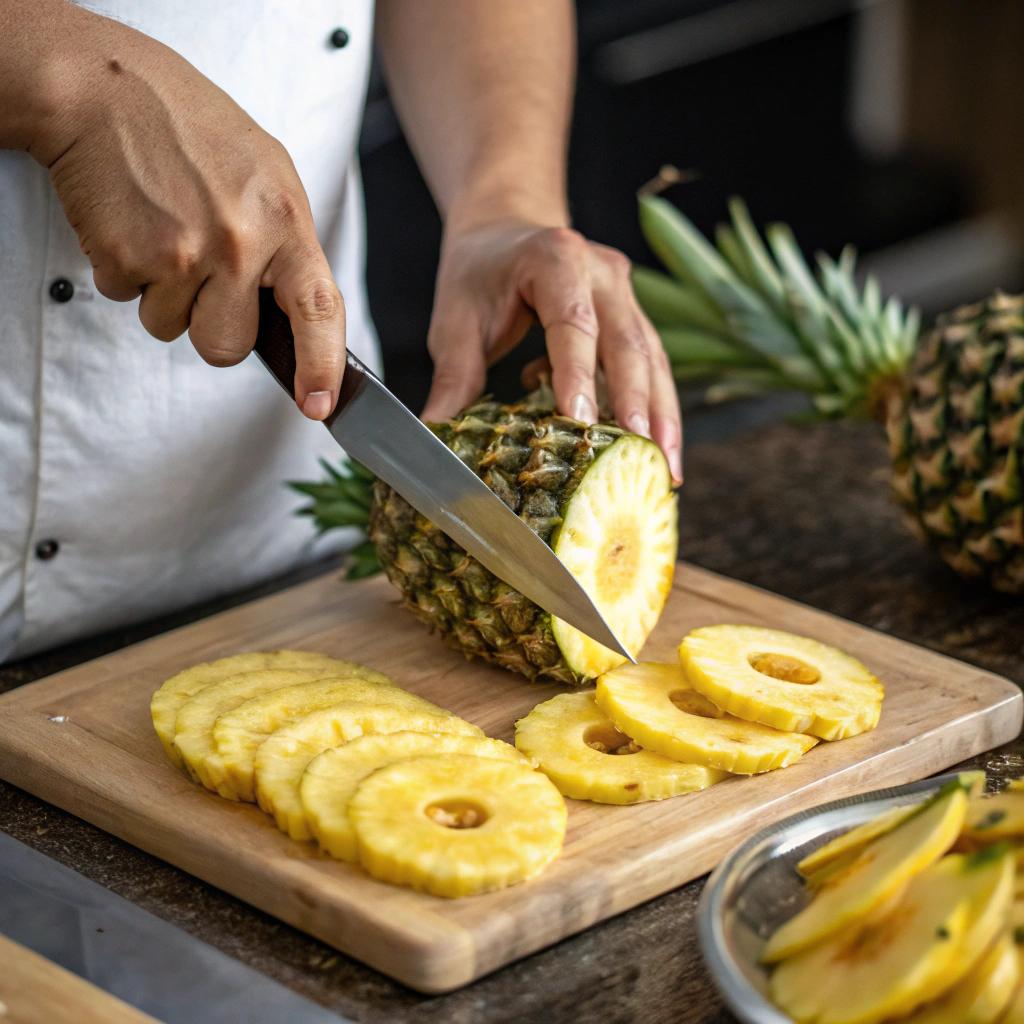
When learning to cut pineapple, starting with classic rings is a great way to build confidence. First, lay your fresh pineapple on its side and slice off both ends. Stand it upright and carefully cut away the outer skin in strips, removing any remaining “eyes.” For rings, lay the peeled pineapple horizontally and slice it into even rounds about 1/2 inch thick. To make chunks from your cut pineapple, simply quarter each ring or cut them into smaller bite-sized pieces. I love using these chunks for fruit salads or quick snacks during busy weekdays. Remember to remove the tough core from each ring – I find a small round cookie cutter works perfectly for this job!
Spears and Wedges
After removing the top and bottom of your pineapple, stand it upright and slice it in half lengthwise. Cut each half into quarters, then eighths to create perfect spears. When making cut pineapple spears, angle your knife slightly to remove the tough core strip from each piece. These long, elegant spears are perfect for grilling or as a stunning addition to tropical drink garnishes. For wedges, simply cut your spears into shorter sections – I usually aim for about 2-inch pieces. These are great for kids’ lunchboxes or party platters. Pro tip: Keep the wedges uniform in size so they cook evenly if you’re planning to grill them.
Fancy Cuts for Garnishing
Transform your cut pineapple into eye-catching designs that’ll wow your guests! My favorite trick is creating pineapple flowers: Make very thin slices, then arrange them in a flower pattern on skewers. For boats, hollow out half a pineapple lengthwise and score the flesh in a crosshatch pattern before scooping it out. This creates the perfect vessel for tropical fruit salads or piña coladas. Try cutting thin triangular pieces for a modern plating style, or use a crinkle cutter to make decorative edges. Remember to keep your knife super sharp – it makes all the difference when creating these detailed cuts. These fancy presentations are perfect for summer parties!
Storing Your Cut Pineapple
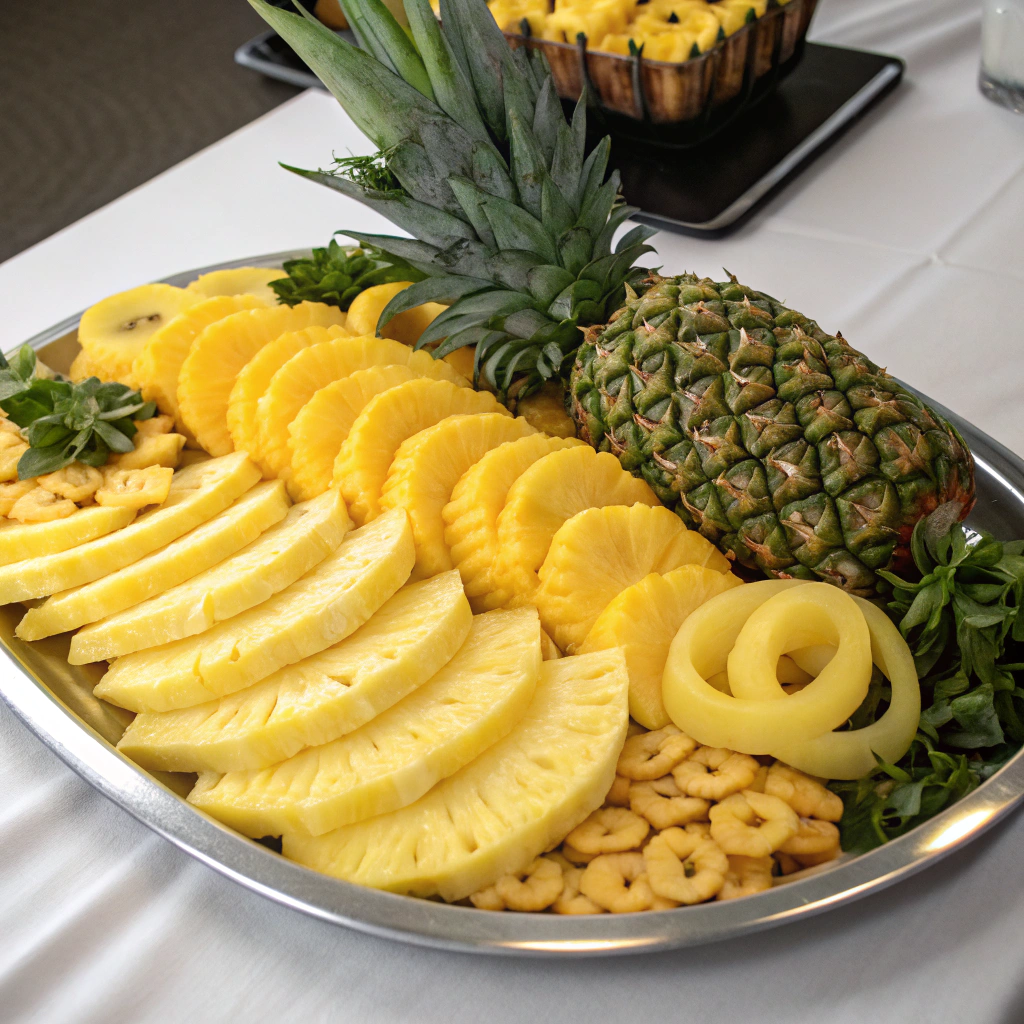
Container Options for Fresh-Cut Pineapple
Properly storing cut pineapple helps maintain its juicy freshness for longer. Choose an airtight container that’s large enough to avoid crushing the fruit. I prefer glass containers with snap-on lids – they keep the pineapple fresh without absorbing any flavors. Before storing your cut pineapple, pat the pieces gently with a paper towel to remove excess moisture. Layer the pieces in a single row when possible to prevent them from getting mushy. If you’re storing rings, place wax paper between layers to keep them from sticking together. Always keep your container in the refrigerator’s front section where you can easily see it – this reminds you to enjoy it within 5-7 days.
Freezing Methods and Tips
When freezing cut pineapple, start by laying the pieces on a parchment-lined baking sheet, making sure they don’t touch each other. This flash-freezing method prevents the pieces from clumping together. Once frozen solid, transfer your cut pineapple to freezer bags or containers. I like to measure out smoothie-sized portions before freezing – it makes morning prep so much easier! Remove as much air as possible from storage bags to prevent freezer burn. Label everything with the date, as frozen cut pineapple stays good for about six months. For best results, freeze pineapple when it’s perfectly ripe – this preserves both flavor and texture.
Signs Your Cut Pineapple Has Gone Bad
Keep an eye on your cut pineapple for any changes in appearance or smell. Fresh cut pineapple should maintain its bright yellow color – if you notice brown or dark spots developing, it’s starting to spoil. A fermented or sour smell is another clear warning sign. The texture of your cut pineapple should stay firm; if pieces become mushy or develop a slimy coating, it’s time to toss them. Watch for any signs of mold, which can appear as white, green, or black spots. When in doubt, remember that properly stored cut pineapple typically lasts 5-7 days in the refrigerator. Trust your senses – if something seems off, it’s better to be safe than sorry!
Ready to Cut Your Own Pineapple?
Now that you know the ins and outs of cutting pineapple, grab your sharpest knife and give it a try! Start with a ripe pineapple and take your time – speed comes with practice. Try using your fresh-cut chunks in fruit salads, smoothies, or grilled on the BBQ. For a refreshing summer treat, try combining your freshly cut pineapple with cantaloupe summer salad for a tropical twist. Share your pineapple cutting adventures in the comments below – I’d love to hear how it went and answer any questions you might have!


